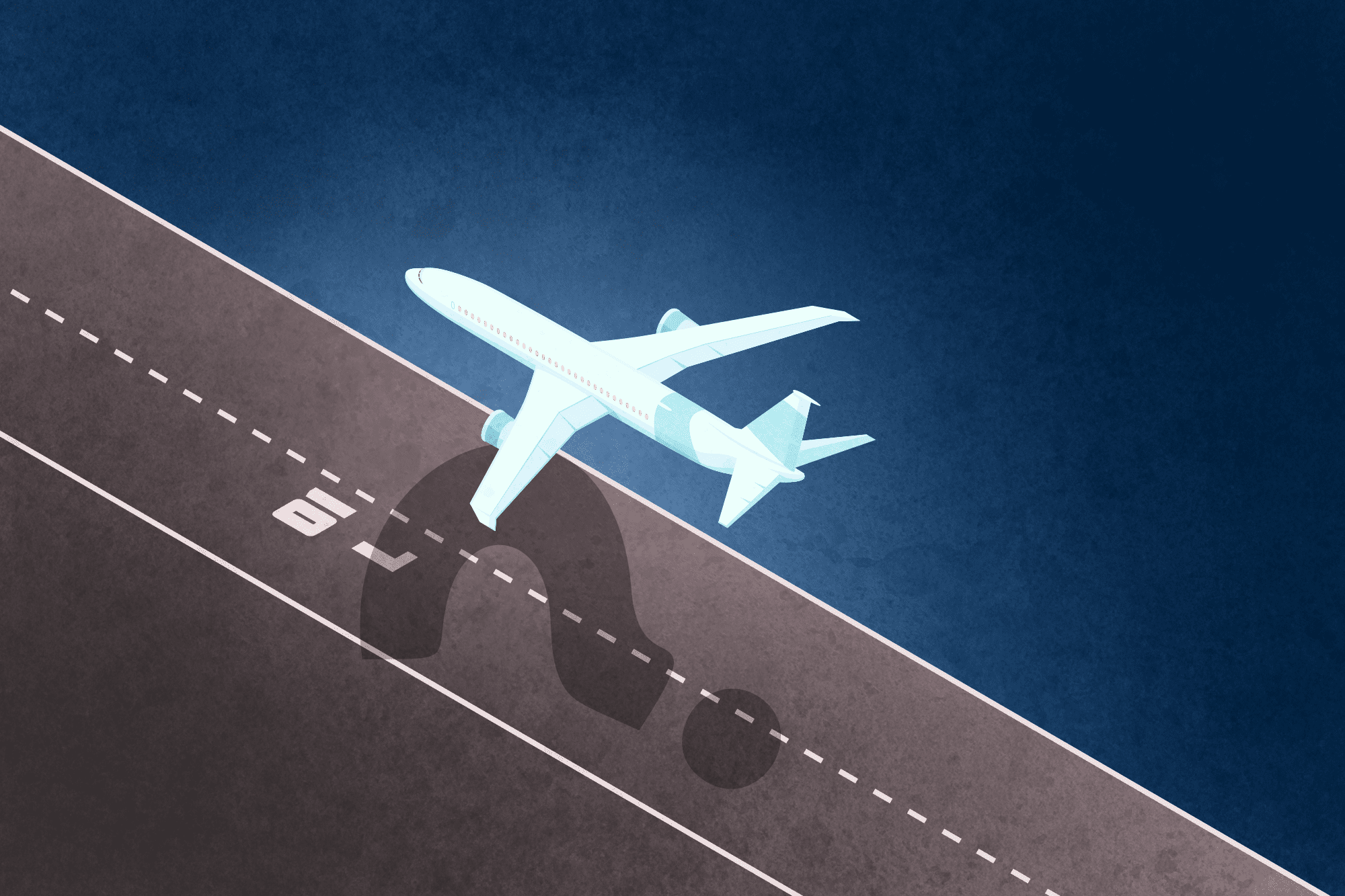Comparing Best and Worst Case Scenarios for the Airlines

Photo Credit: Many big questions hang over the future prospects of the airline industry. Skift / Illustration by Joanna Gonzalez
Skift Take
It will take years for the airline industry to recover from the coronavirus pandemic. That much is a given. But what shape will that recovery take and how long will it last? Skift Airline Weekly debated two scenarios — the optimistic and the pessimistic view. Where the industry goes from here depends on how long it takes for passengers to want to fly, how long the recession lasts, and how robustly governments respond.
The airline industry is facing a crisis the likes of which it has never seen in its 100 years of existence. Skift Airline Weekly went deep on two scenarios: An optimistic view of the recovery, and the pessimistic. You can watch Senior Analyst Jay Shabat and Editor Madhu Unnikrishnan discuss both scenarios in our recent webinar.
Part One: Half full, or why the airline industry should be optimistic.This much is clear: The world’s airline industry is experiencing its greatest crisis ever. Nothing in the past comes even close. But as governments provide massive support to distressed economies, as entire societies mobilize to defeat the pandemic, and as airlines themselves take advantages of unique opportunities presented by the crisis, brighter days might come sooner than later.
Get the Latest on Coronavirus and the Travel Industry on Skift's Liveblog
Two trillion dollars is an unthinkably large amount money. It’s the amount America’s Congress alone is spending to cushion the U.S. economy. That figure doesn’t include trillions more in monetary support from the Federal Reserve. It doesn’t factor in future aid, which will add perhaps another trillion. It ignores the trillions other governments around the world are spending to support their economies. If you had a million $1,000 bills stacked on a table, Harvard Professor Linda J. Bilmes once explained, it would be about four inches high. If you had a billion $1,000 bills? It would be about 350 feet high, which is taller than the Statue of Liberty. And a trillion $1,000 bills? 65 miles high.
The point is, government efforts to support distressed economies have been massive and unprecedented, sure to provide temporary relief to households and companies, including airlines. April 9 marked 100 days since the World Health Organization was first notified about cases of “pneumonia with unknown cause.” Today, even as Covid-19 devastates markets, not a single major airline has collapsed. Temporary government aid, in other words, is doing its job. And besides, this is not a typical recession. The economy isn’t broken, just temporarily switched off to enforce social distancing. The U.S. in particular, entered the crisis with strong fundamentals: low unemployment, low inflation, low interest rates, low oil prices, and yes, a very healthy airline sector. As Federal Reserve Chair Jerome Powell said last week: “When the virus does run its course, and it’s safe to

